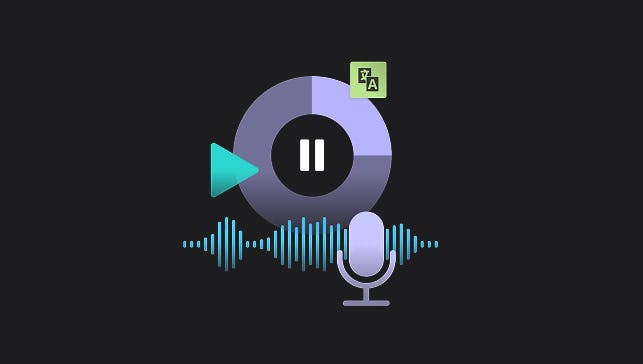The recent results of a major national test shows that student performance in the United States has yet to return to pre-pandemic levels. The National Assessment of Educational Progress (NAEP), often called the ‘Nation’s Report Card', tracks reading, math, and science achievement across the country.
This release includes the first post-pandemic results for 8th grade science and 12th grade math and reading. The findings are stark:
- Average scores declined from 2019 to 2024 in all three subject areas
- 8th grade science fell for the first time since the assessment began in 2009
- 12th grade math dropped to its lowest point since the assessment began in 2005
- 12th grade reading reached its lowest point since the assessment began in 1992
It’s clear that these are students who missed out on foundational learning during pandemic closures.
Most concerning, a larger share of high school students than ever before are now scoring below the basic achievement level in math and reading.
Declines were steepest among the lowest-performing students, widening the gap between top and bottom performers.
Access is the difference-maker
From an educator perspective, one of the biggest challenges reflected in the post pandemic data is how to make rigorous, grade-level materials available to students who are behind. Interventions and supports like tutoring and, of course, differentiated instruction can play a role. Technology is also a piece of the puzzle. Across reading, math, and science, one truth stands out: to demonstrate grade-level achievement, students need access to grade-level content. Removing barriers to their learning is essential. That means:
- Research-based, differentiated curriculum and accessible materials that meet students where they’re at in the learning and allow them to engage
- Assistive technology tools that reduce barriers and promote student independence in reading, writing, math and STEM subjects
- Planning tools that provide actionable data and insights to help teams make informed instructional decisions and target support where it’s needed most
- Professional development and practical resources that give teachers the confidence to deliver effective instruction across diverse classrooms with consistency, without adding to their workload
What do the latest NAEP scores tell us about the state of 12th grade reading?
Many of today’s 12th graders were already in 7th or 8th grade when the pandemic closed schools in the spring of 2020. Today’s results dispel a myth that the work of building critical literacy skills ends in elementary school. Reading is the foundation for every subject and all learning, and today’s decline shows how fragile progress can be. With 32% of students now performing below the basic level, we risk leaving too many young people unprepared for college, work, and life.
Reading scores provide one of the clearest signals about readiness. Literacy is the key that unlocks learning across every subject. Strong reading skills unlock access to math, science, and the wider curriculum. When students build mastery not only in decoding but also in comprehension, background knowledge, and vocabulary, they gain the confidence and cognitive tools to access every subject and to see themselves as capable learners. Decades of research confirm that these combined skills form the core of academic achievement and lifelong learning.
These results underscore that improving reading outcomes isn’t about a single program, but about giving every student access to the right tools and instruction that work for them. Everway helps schools strengthen this foundation through assistive technologies, accessible curriculum, and evidence-based practices that make literacy more attainable for all learners, ensuring every student has the opportunity to engage with text, grow as a reader, and thrive beyond the classroom.
Math as a language of reasoning
Math performance at 12th grade fell to its lowest point in nearly 20 years, with 45 percent of students now performing below the Basic level. Once again, the gap between high and low performing students widened, as only those at the very top held steady.
Math scores provide another important signal. Math is not just numbers it is a language of reasoning, problem-solving, and pattern recognition. Strong math skills enable success in the classroom, create pathways to higher education and careers, and equip students to navigate everyday life.
For too long, math has been seen as a barrier. With the right instruction and supports, it can become a gateway. The goal is to help students see themselves as capable problem-solvers with valuable skills for the future that fuel innovation, confidence, and lifelong learning.
Science deserves the spotlight
For the first time since 2009, 8th grade science scores declined. More than a third of students performed below the Basic level, with the steepest drops among the lowest-performing learners, widening gaps between groups.
Science scores often fly under the radar, but they matter just as much as reading and math. Success in science requires not only knowledge of concepts and practices but also the literacy to read, interpret, and apply complex vocabulary and the math skills to solve quantitative problems, interpret data, and use basic operations.
At the same time, science offers something unique: a space for curiosity, creativity, and problem-solving. These are strengths many learners, including neurodivergent students, bring in abundance. By making science instruction more accessible and inquiry-driven, we can help students see themselves as capable contributors to discovery, innovation, and the future of work.
Looking ahead
The 2024 NAEP scores confirm that challenges remain. But they also highlight the opportunity to act with focus in order to accelerate student learning. By helping all students access grade-level curriculum, we can widen opportunity, narrow gaps, and unlock the unique strengths each learner brings.
At Everway, we believe that education should not be defined by deficits. With the right tools and instruction, every learner can grow, engage, and contribute. These scores are a call to action: to move beyond averages and build a system where every student has the chance to thrive.


